Base by Base
Base by Base explores advances in genetics and genomics, with a focus on gene-disease associations, variant interpretation, protein structure, and insights from exome and genome sequencing. Each episode breaks down key studies and their clinical relevance—one base at a time. Powered by AI, Base by Base offers a new way to learn on the go. Special thanks to authors who publish under CC BY 4.0, making open-access science faster to share and easier to explore.
123: Dominant‑Negative ATP5F1A Variants Uncouple Complex V and Drive Neurological Disease

️ Episode 123: Dominant‑Negative ATP5F1A Variants Uncouple Complex V and Drive Neurological Disease
In this episode of PaperCast Base by Base, we explore how de novo heterozygous ATP5F1A missense variants disrupt mitochondrial ATP synthase and manifest as pediatric neurological disorders, revealing a dominant‑negative mechanism and an isolated Complex V defect.
Study Highlights:
The authors describe six probands with developmental delay, dystonia, pyramidal tract signs and failure to thrive, each carrying ATP5F1A variants clustered at the α–β or α–γ interfaces of the F1 sector of ATP synthase. In vivo CRISPR knock‑ins of o...
122: Patient Stratification Reveals the Molecular Basis of Disease Co-Occurrences

️ Episode 122: Patient Stratification Reveals the Molecular Basis of Disease Co-Occurrences
In this episode of PaperCast Base by Base, we explore a study that investigates the molecular underpinnings of why certain diseases tend to co-occur. By using large-scale RNA sequencing data, the authors present a novel approach to identify disease co-occurrences, revealing a shared molecular basis in many comorbidities, particularly involving the immune system. The study introduces patient stratification based on gene expression profiles, which uncovers known and potential new disease associations, providing a framework for personalized approaches to managing comorbidities.
Study Highlights:
The re...
121: G-quadruplexes as a Source of Vulnerability in BRCA2-deficient Granule Cell Progenitors and Medulloblastoma
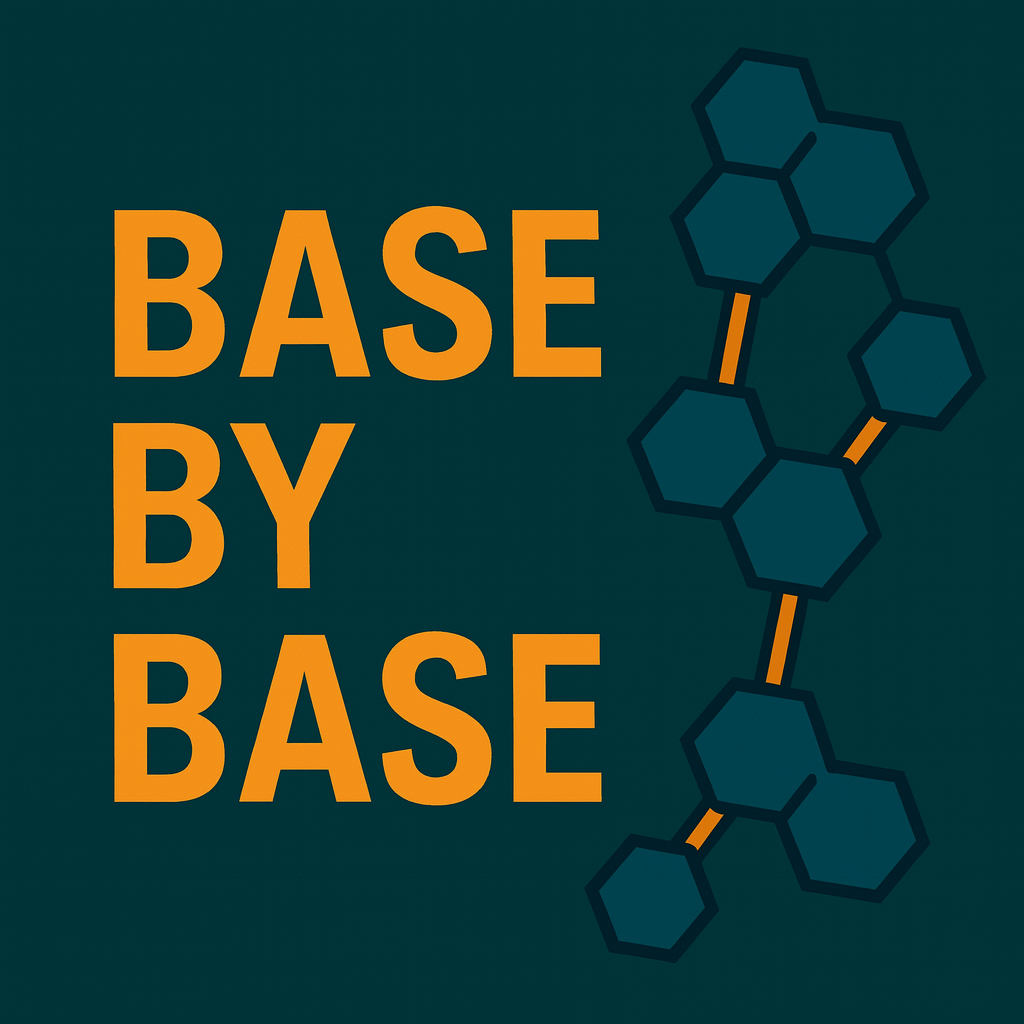
️ Episode 121: G-quadruplexes as a Source of Vulnerability in BRCA2-deficient Granule Cell Progenitors and Medulloblastoma
In this episode of PaperCast Base by Base, we explore how DNA secondary structures called G-quadruplexes (G4s) contribute to genome instability and tumor development in BRCA2-deficient cerebellar granule cell progenitors, leading to medulloblastoma.
Study Highlights:
Using a mouse model with Brca2 deletion in the nervous system and Trp53 loss, researchers observed that these animals developed Sonic Hedgehog (SHH) subgroup medulloblastomas with complete penetrance. Whole-genome sequencing revealed that structural variant breakpoints frequently overlapped with predicted G4-forming sequences, su...
120: Rare BMAL1 Variants Link the Circadian Clock to Neurodevelopment
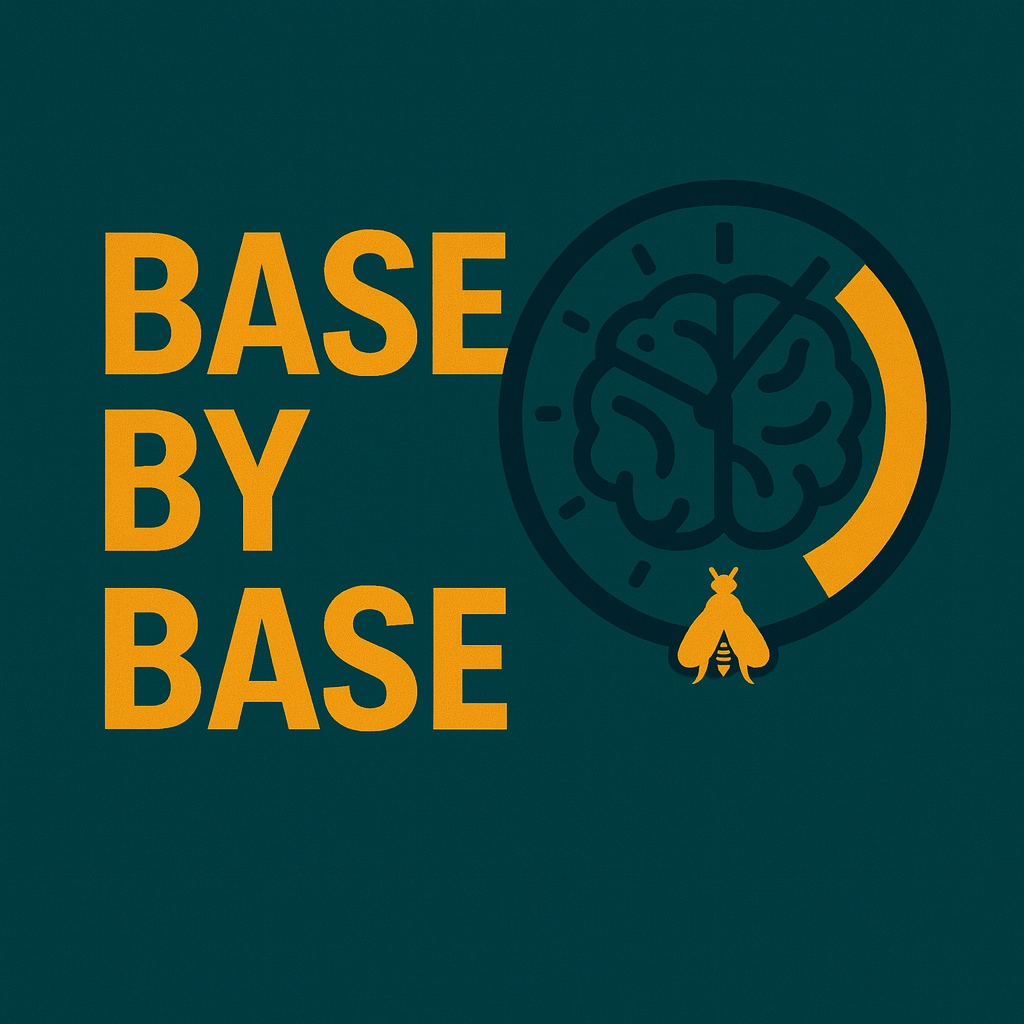
️Episode 120: Rare BMAL1 Variants Link the Circadian Clock to Neurodevelopment
In this episode of PaperCast Base by Base, we explore how ultrarare heterozygous variants in BMAL1—a core circadian clock gene—are associated with a neurodevelopmental syndrome featuring developmental delay, autism spectrum disorder, and musculoskeletal findings.
Study Highlights:
The authors identified ten individuals carrying very rare BMAL1 variants, five of which were de novo, and documented overlapping clinical features including developmental delay and autism spectrum disorder with variably penetrant sleep disturbances and marfanoid traits. Functional assays in U2OS cells using a Per2 promoter–driven l...
119: G‑Quadruplex Stabilization Triggers Pericentromeric DNA Breaks in B Cells

️ Episode 119: G‑Quadruplex Stabilization Triggers Pericentromeric DNA Breaks in B Cells
In this episode of PaperCast Base by Base, we explore how stabilizing G‑quadruplex DNA structures with small molecules reshapes genome stability in B lymphocytes, revealing fragile hotspots in pericentromeric repeats and ribosomal DNA and exposing checkpoint-dependent differences between primary and malignant cells.
Study Highlights:
Using the G‑quadruplex stabilizer pyridostatin in mouse primary B cells, a lymphoma line (CH12), and human B cell lines, the authors mapped DNA damage with metaphase spreads and FISH and found recurrent breaks and fusions concentrated at major sa...
118: Cancer cells subvert the primate-specific KRAB zinc finger protein ZNF93 to control APOBEC3B
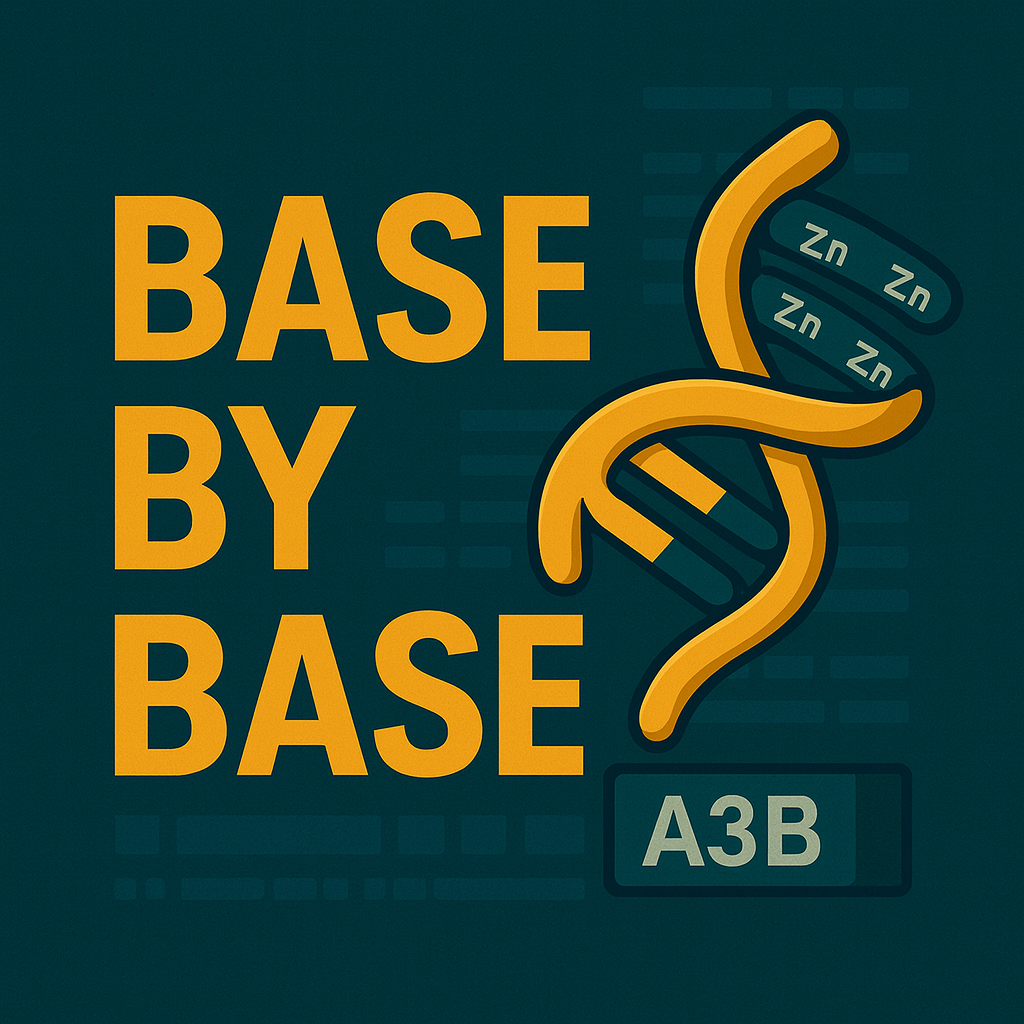
️ Episode 118: Cancer cells subvert the primate-specific KRAB zinc finger protein ZNF93 to control APOBEC3B
In this episode of PaperCast Base by Base, we explore how cancer cells co-opt a primate-specific KRAB zinc finger protein, ZNF93, to fine-tune the mutagenic enzyme APOBEC3B and manage replication stress.
Study Highlights:
Using genome-wide KZFP binding maps, CUT&Tag, RNA-seq, and functional assays across multiple cancer cell lines, the authors identify ZNF93 as a proliferation-linked regulator enriched at promoters of young endonuclease-competent LINE-1 elements and as a direct repressor of APOBEC3B. ZNF93 knockdown consistently reduces proliferation, ac...
117: Pol III–linked polyadenylation fuels SINE RNA accumulation during infection
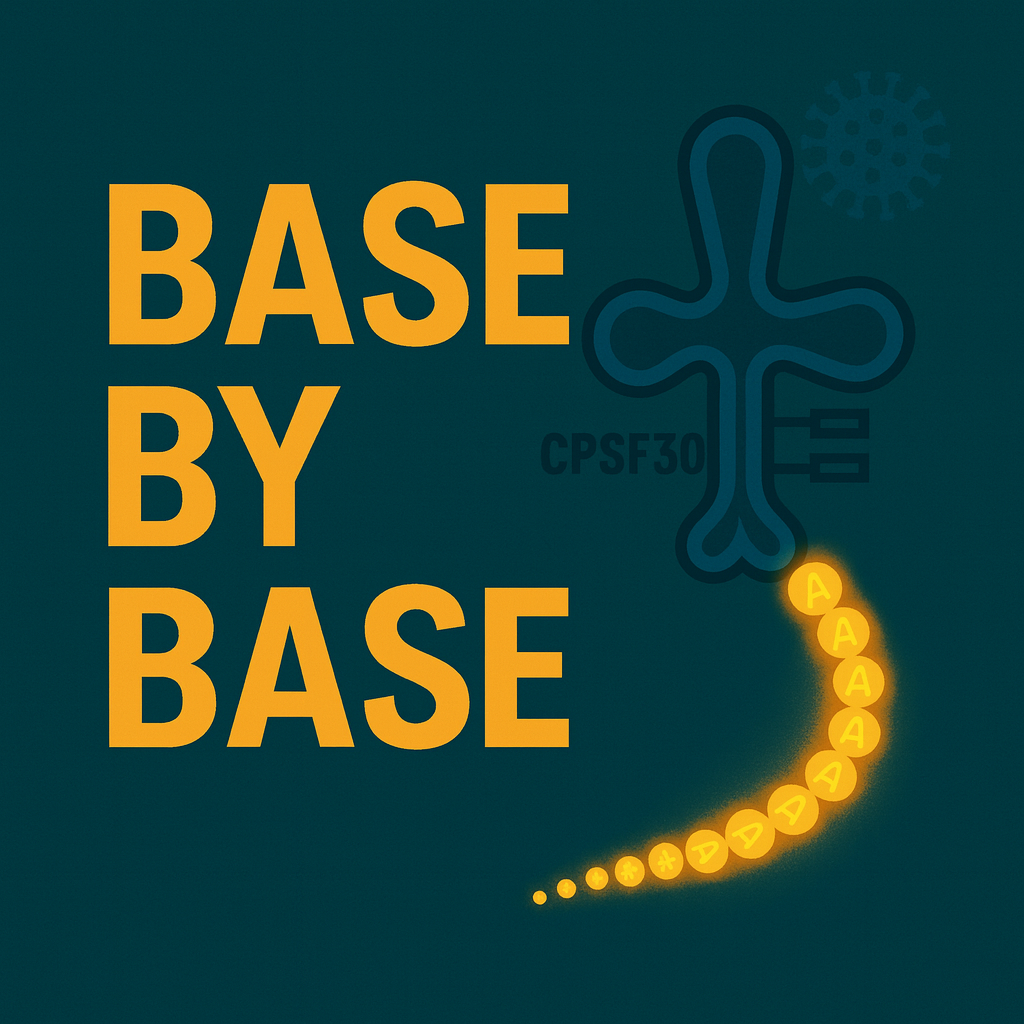
️ Episode 117: Pol III–linked polyadenylation fuels SINE RNA accumulation during infection
In this episode of PaperCast Base by Base, we explore how viral infection couples RNA polymerase III transcription with mRNA-like 3′ end processing to stabilize noncoding retrotransposon RNAs, revealing a conserved mechanism that boosts SINE RNA abundance during pathogenic stress. fileciteturn0file0
Study Highlights:
Using murine gammaherpesvirus (MHV68) infection as a model, the authors show by Polr3A ChIP-seq that increased Pol III occupancy at type II promoters such as B2 SINEs and tRNA genes contributes to but does not fully explain SINE RNA accumula...
116: Cell Type–Specific Purifying Selection of Synonymous mtDNA Variation
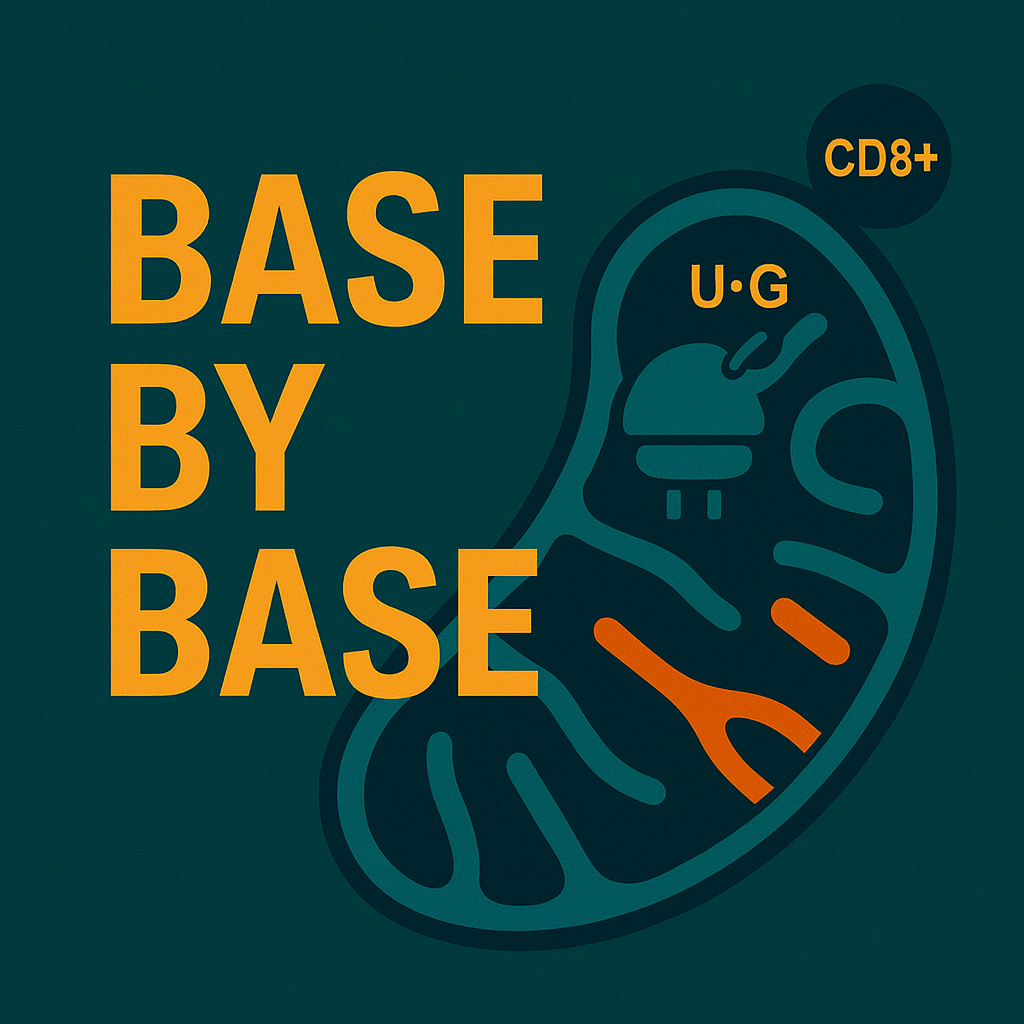
️ Episode 116: Cell Type–Specific Purifying Selection of Synonymous mtDNA Variation
In this episode of PaperCast Base by Base, we explore how a seemingly “silent” synonymous mitochondrial DNA mutation can shape immune cell fitness, revealing cell type–specific selection in human T cells and a mechanistic link to mitochondrial translation dynamics.
Study Highlights:
Using single-cell multiomics on peripheral blood from a healthy donor, the authors identify a mosaic synonymous variant in MT-CO1 (m.7076A>G, p.Gly391=) that is selectively depleted in CD8+ effector-memory T cells while remaining tolerated in other lineages. They show that...
115: A Transcriptomic, Proteomic, and Functional Genetic Atlas Dissects Neurofibromin Function in the Peripheral Nervous System

Episode 115: A Transcriptomic, Proteomic, and Functional Genetic Atlas Dissects Neurofibromin Function in the Peripheral Nervous System
In this episode of PaperCast Base by Base, we explore how an integrated multi‑omics and CRISPR interference atlas maps the function of the NF1 tumor suppressor neurofibromin in peripheral nerve cells and reveals context‑specific therapeutic sensitivities relevant to neurofibromatosis type 1 and related tumors.
Study Highlights:
Using CRISPR interference in immortalized peripheral nerve cells, the authors systematically repressed NF1 and key upstream Ras regulators and profiled transcriptomes, phosphoproteomes, and drug responses to delineate neurofibromin’s roles. NF1 repres...
114: One-hour extraction-free loop-mediated isothermal amplification HPV DNA assay for point-of-care testing in Maputo, Mozambique
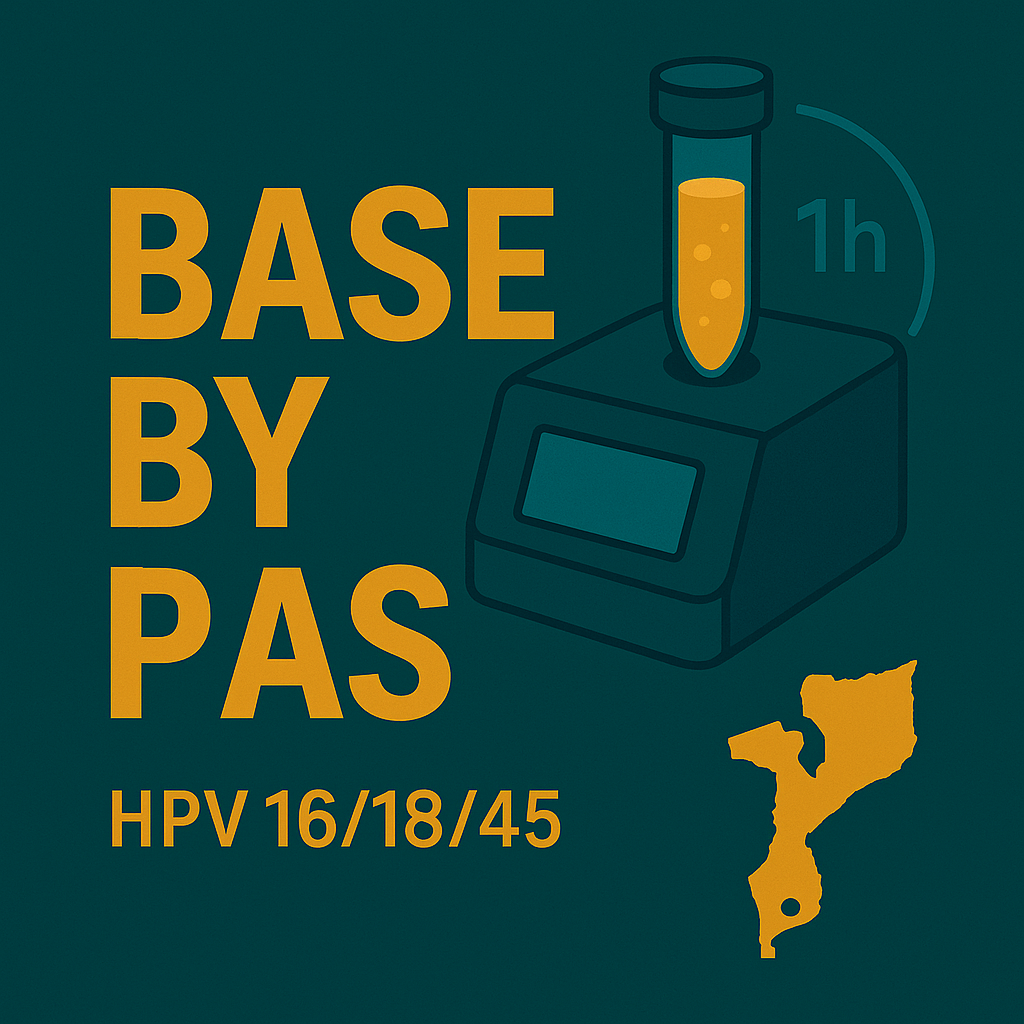
️ Episode 114: One-hour extraction-free loop-mediated isothermal amplification HPV DNA assay for point-of-care testing in Maputo, Mozambique
In this episode of PaperCast Base by Base, we explore the development of a rapid and affordable HPV DNA test designed for cervical cancer screening in low-resource settings. The study introduces a one-hour, extraction-free loop-mediated isothermal amplification (LAMP) assay that directly processes cervicovaginal samples without complex infrastructure.
Study Highlights:
The researchers designed a multiplex LAMP assay targeting HPV16, HPV18, and HPV45—the three HPV types most responsible for cervical cancer—along with a cellular control. Using a simple benchtop fluori...
113: Joint, Multifaceted Genomic Analysis Enables Diagnosis of Ultra-Rare Monogenic Presentations
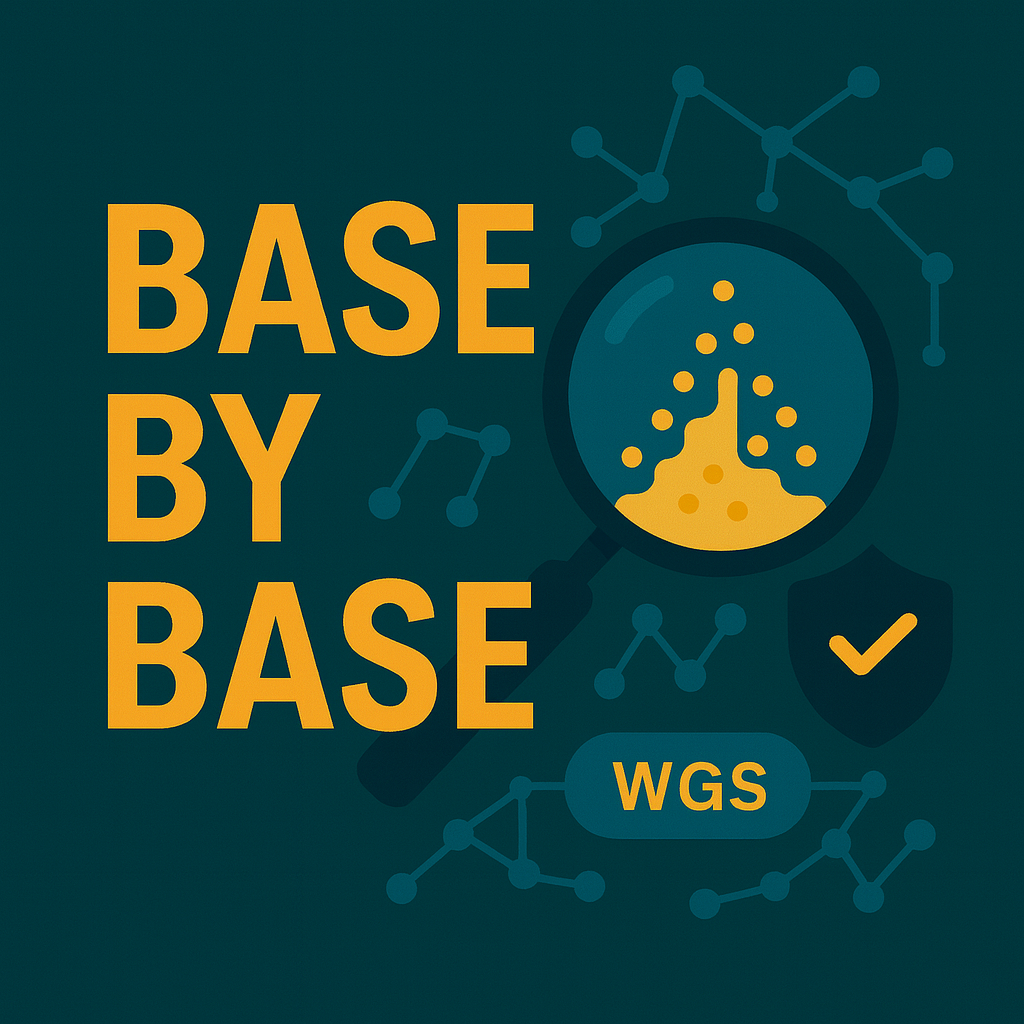
️ Episode 113: Joint, Multifaceted Genomic Analysis Enables Diagnosis of Ultra-Rare Monogenic Presentations
In this episode of PaperCast Base by Base, we explore how the Undiagnosed Diseases Network (UDN) applied whole‑genome sequencing and new, well‑calibrated statistics to jointly analyze diverse, ultra‑rare monogenic cases across the consortium, yielding confirmed and putative diagnoses while enabling privacy‑preserving cross‑cohort discovery via shareable summary statistics.
Study Highlights:
The authors introduce RaMeDiES, a suite of analytical methods that detect gene‑level recurrence of deleterious de novo variants (RaMeDiES‑DN) and prioritize compound‑heterozygous configurations (RaMeDiES‑CH), with an individual‑level...
112: Local Genetic Sex Differences in Quantitative Traits

️ Episode 112: Local Genetic Sex Differences in Quantitative Traits
In this episode of PaperCast Base by Base, we explore how genetic differences between males and females are distributed across the genome, moving beyond global averages of heritability and correlation. The study introduces a fine-scale approach using LAVA to examine local genetic sex differences across 157 quantitative traits in the UK Biobank.
Study Highlights:
The researchers analyzed sex-stratified GWAS summary statistics and partitioned the genome into nearly 2,500 loci. They estimated local heritabilities, genetic correlations, and equality of genetic effects, finding that nearly every trait had at least on...
111: A Multimodal Dataset for Precision Oncology in Head and Neck Cancer

️ Episode 111: A Multimodal Dataset for Precision Oncology in Head and Neck Cancer
In this episode of PaperCast Base by Base, we explore the creation of HANCOCK, a comprehensive multimodal dataset designed to advance precision oncology in head and neck cancer. The study addresses the urgent need for large, publicly available datasets to improve biomarker discovery and outcome prediction in this challenging disease.
Study Highlights:
The HANCOCK dataset integrates real-world data from 763 patients, including demographics, pathology, blood tests, surgery reports, and histologic images. By combining these modalities, the researchers created multimodal patient vectors that capture co...
110: Whole-exome sequencing identifies new schizophrenia risk genes

️ Episode 110: Whole-exome sequencing identifies new schizophrenia risk genes
In this episode of PaperCast Base by Base, we explore a landmark whole-exome sequencing study that expands our understanding of the rare genetic variants contributing to schizophrenia risk. By combining newly sequenced samples with large-scale published datasets, researchers provide the most comprehensive analysis to date of rare coding variants in this psychiatric disorder.
Study Highlights:
The study analyzed exome sequencing data from 4,650 new schizophrenia cases and 5,719 controls, which were combined with previously published datasets totaling nearly 29,000 cases, over 103,000 controls, and 3,444 proband-parent trios. Using meta-analysis, researchers identified ex...
109: Autocrine Interferon Poisoning: ADAR1–BRCA Synthetic Lethality
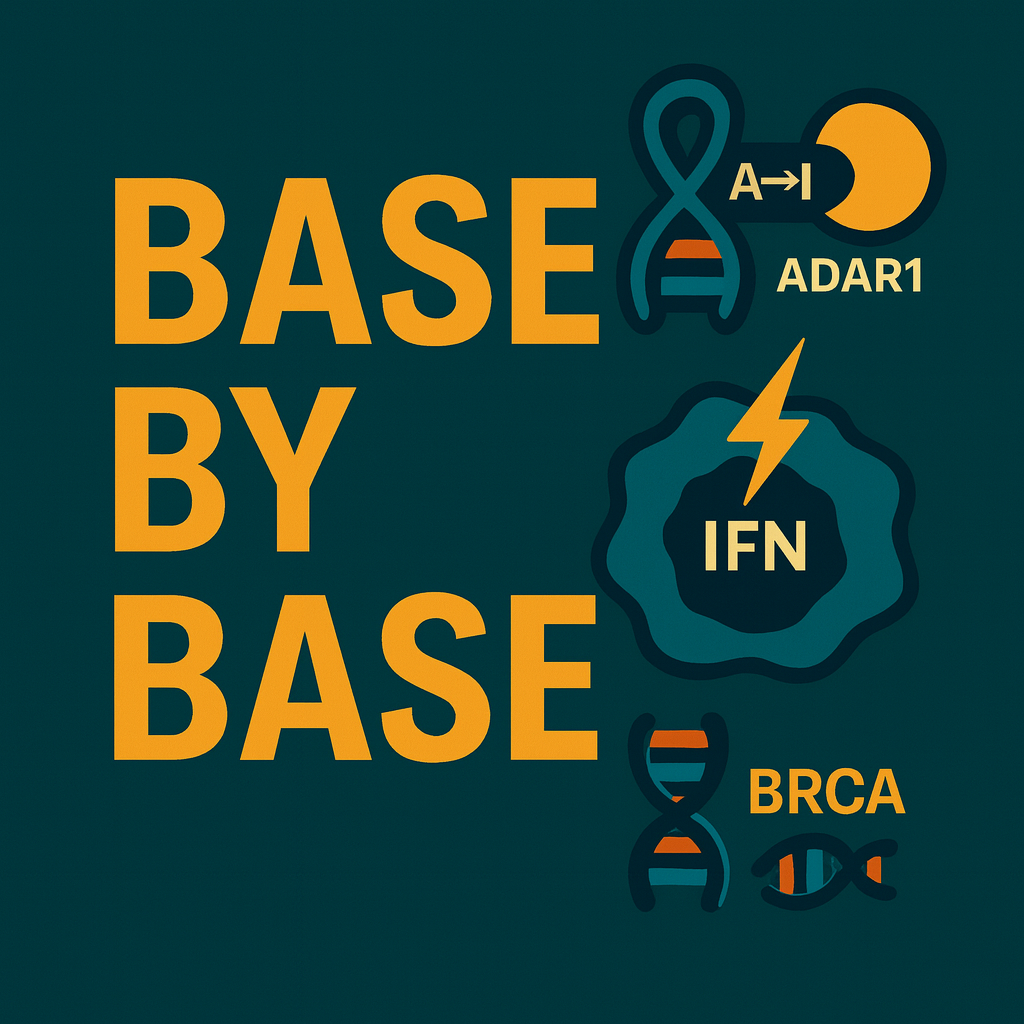
️ Episode 109: Autocrine Interferon Poisoning: ADAR1–BRCA Synthetic Lethality
In this episode of PaperCast Base by Base, we explore how loss of the RNA editor ADAR1 becomes lethal to BRCA1/2‑mutant cancer cells through a tumor‑cell‑autonomous interferon response, outlining a biomarker‑guided path to ADAR1‑targeted therapy.
Study Highlights:
A focused PRR siRNA screen and multiple orthogonal validations revealed a robust synthetic lethality between BRCA1/2 mutations and ADAR1 loss across isogenic human and mouse models, non‑isogenic TNBC lines, and zebrafish, with the cytoplasmic ADAR1p150 isoform and its deaminase activity required for survival. ADAR1...
108: Epigenome Editing Reverses HBG Silencing
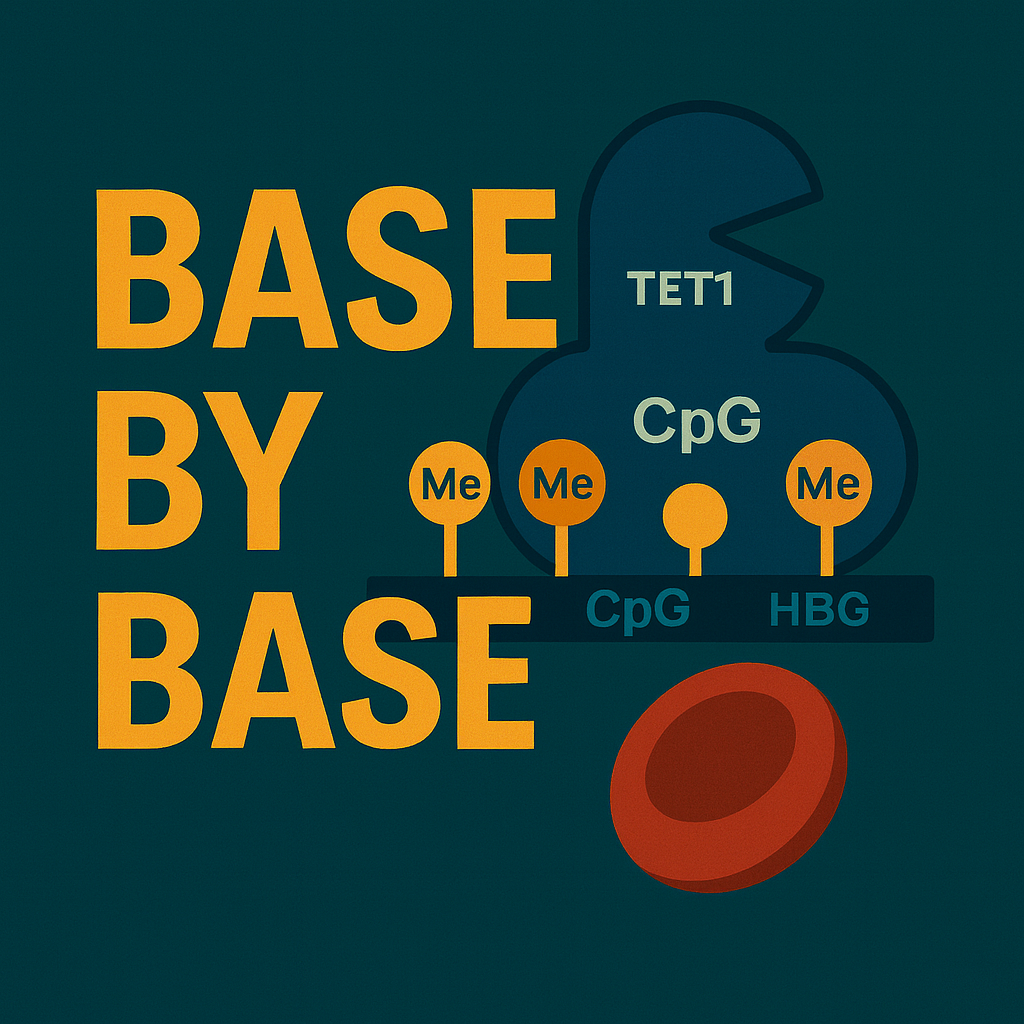
️ Episode 108: Epigenome Editing Reverses HBG Silencing
In this episode of PaperCast Base by Base, we explore how targeted removal of CpG methylation at the HBG promoters causally reactivates fetal hemoglobin (HbF) without cutting DNA, revealing a precise path to treat β‑hemoglobinopathies.
Study Highlights:
A forward CRISPR screen in adult‑type erythroid cells (HUDEP2) pinpointed UHRF1, a DNMT1 cofactor, as a mediator of HBG repression; its disruption globally reduced CpG methylation and increased HbF, and promoter re‑methylation with dCas9‑DNMT3A/3L restored silencing. Targeted demethylation using a dCas9‑TET1 editor at six guides produced loca...
107: Genome-wide Association Study Reveals Genetic Links to Pulpal and Apical Diseases

Episode 107: Genome-wide Association Study Reveals Genetic Links to Pulpal and Apical Diseases
In this episode of PaperCast Base by Base, we explore a large-scale genome-wide association study investigating the genetic underpinnings of pulpal and apical diseases. Using Finnish health registry data from over 485,000 individuals in the FinnGen cohort, researchers identified genetic loci linked to susceptibility to endodontic infections, independent of caries status.
Study Highlights:
The study analyzed three phenotypes—Pulpal and apical diseases, Pulpitis, and Necrosis of pulp or apical periodontitis—identifying 15 independent loci with genome-wide significance. Strong associations were found near the HORM...
106: Decoding Brain Maps for Pharmacotranscriptomics

️ Episode 106: Decoding Brain Maps for Pharmacotranscriptomics
In this episode of PaperCast Base by Base, we explore a Nature Communications study, that introduces a fast, surface-based framework to decode imaging-derived brain phenotypes by aligning high-resolution cortical gene-expression maps with PET targets and structural MRI patterns. The work validates gene–protein correspondences in the serotonergic system and then dissects how GABAA_AA receptor subunit expression partitions the cortex into limbic-enriched and broadly cortical systems that relate to anxiety and depression traits.
Study Highlights:
The authors generate vertex-level cortical expression maps from the Allen Human Brain Atlas using...
105: Genome-level Selection as a Universal Marker of Cancer Therapy Resistance
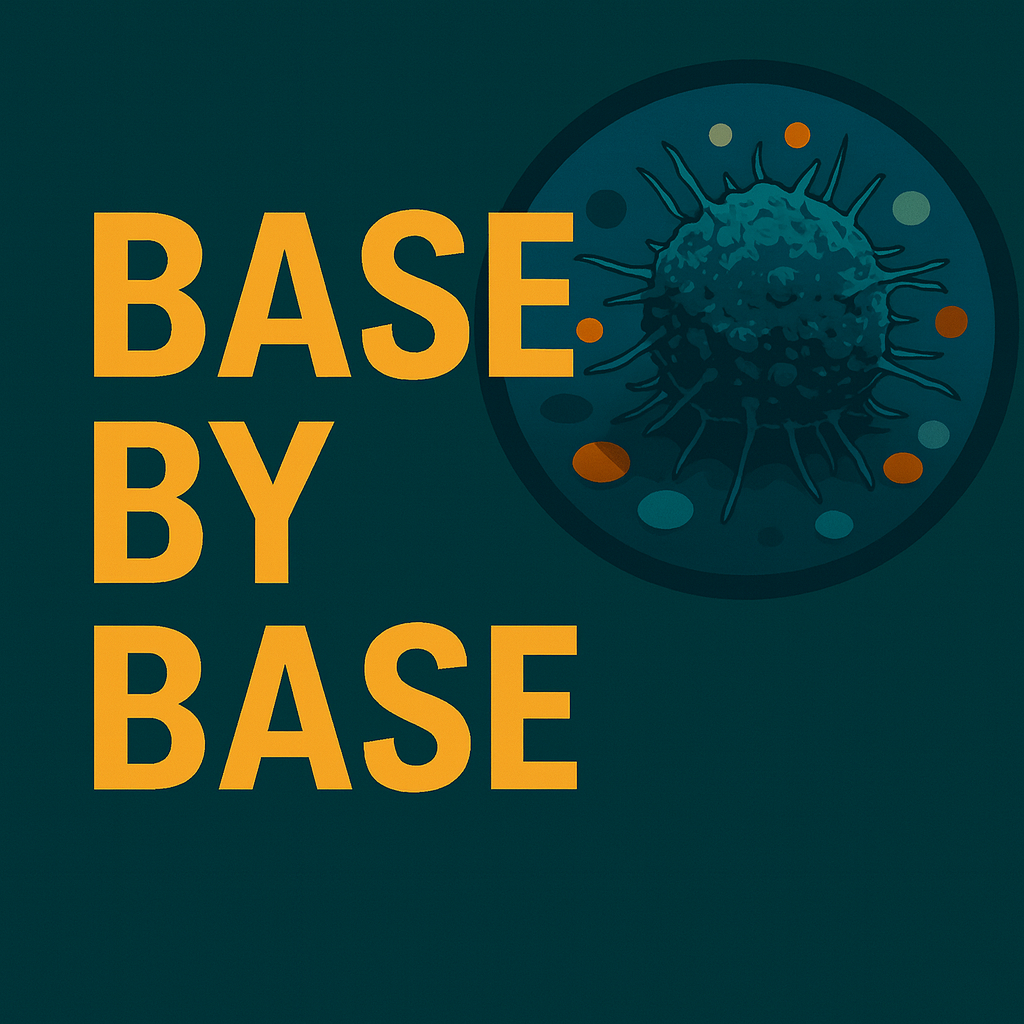
️ Episode 105: Genome-level Selection as a Universal Marker of Cancer Therapy Resistance
In this episode of PaperCast Base by Base, we explore groundbreaking research revealing how the evolutionary dynamics of tumor genomes can serve as a universal marker of resistance to cancer therapy. By analyzing whole-exome sequencing data from multiple cancer types—both treated and untreated—the study uncovers a consistent evolutionary signal that correlates with treatment failure and poor prognosis.
Study Highlights:
The authors examined the strength of protein-level selection (dN/dS) and mutational burden (N) across diverse patient cohorts, including colorectal, esophageal, lung, breast...
104: Cross-population GWAS and proteomics improve risk prediction and reveal mechanisms in atrial fibrillation
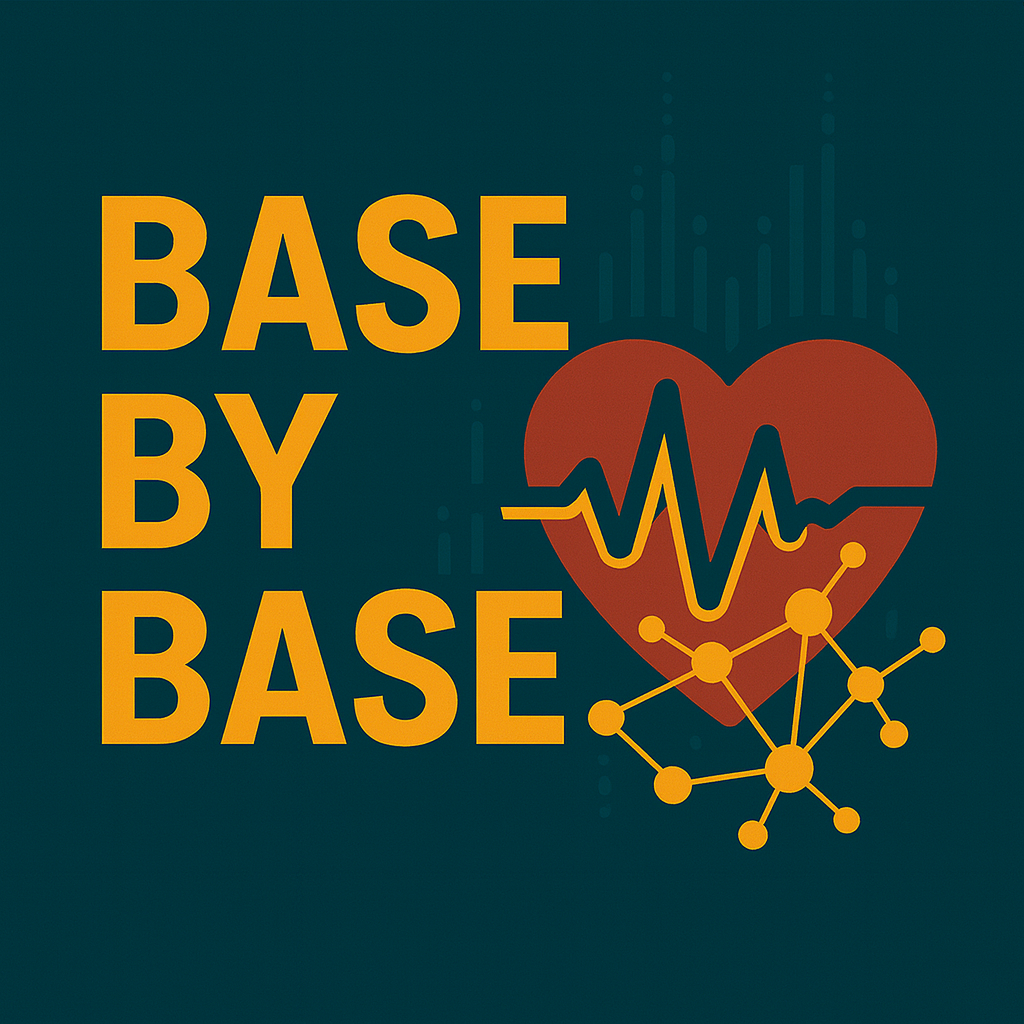
Episode 104: Cross-population GWAS and proteomics improve risk prediction and reveal mechanisms in atrial fibrillation
In this episode of PaperCast Base by Base, we explore a large cross-ancestry study that integrates genome-wide association results with plasma proteomics to map genetic architecture, nominate causal pathways and proteins, and boost risk prediction for atrial fibrillation (AF).
Study Highlights:
The authors meta-analyzed AF across ancestries—more than two million participants overall—and reported 525 genome-wide significant loci among 168,007 AF cases, with PITX2 and ZFHX3 emerging as shared signals across populations. Gene prioritization and pathway enrichment reinforced core roles in musc...
103: Genome Sequencing Forecasts Outcomes After Congenital Cardiac Surgery
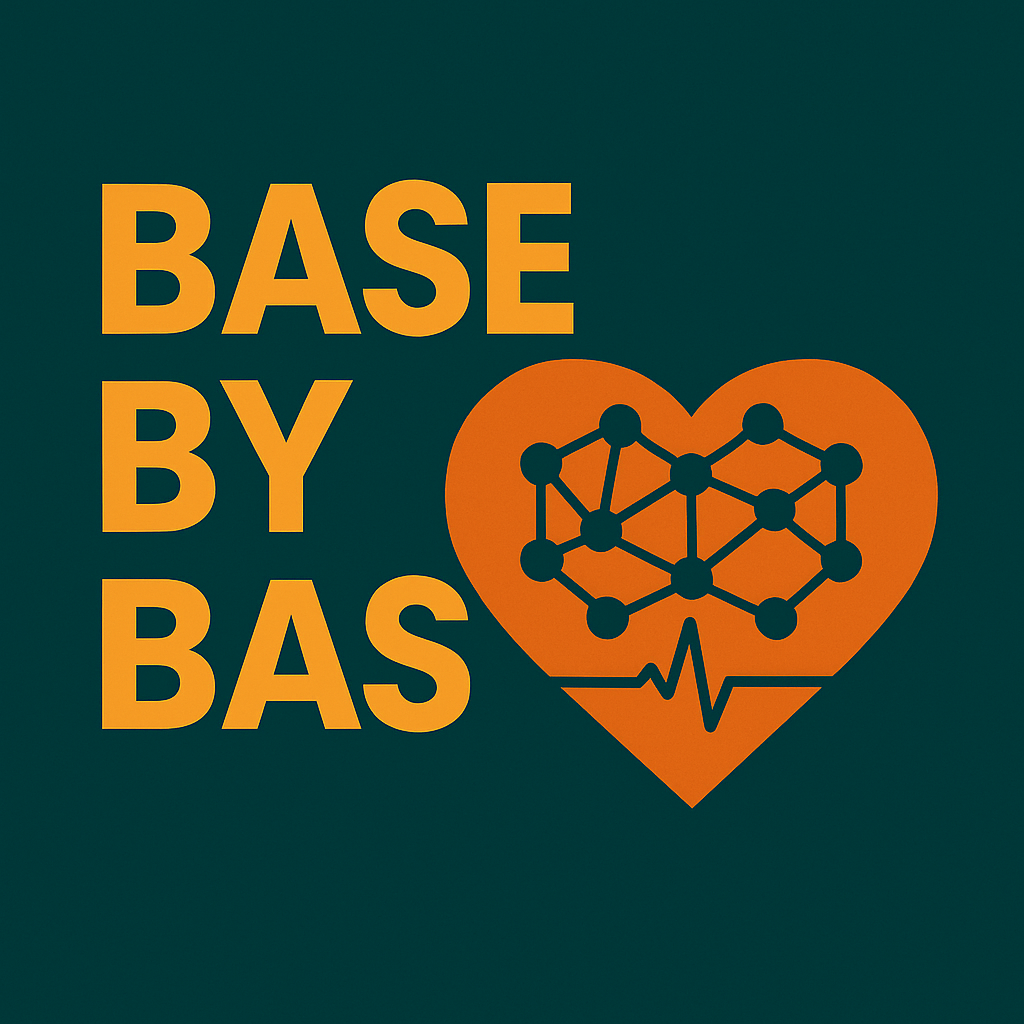
️ Episode 103: Genome Sequencing Forecasts Outcomes After Congenital Cardiac Surgery
In this episode of PaperCast Base by Base, we explore how large-scale exome sequencing combined with explainable AI can predict adverse outcomes after surgery for congenital heart defects. Using a prospective cohort from the Pediatric Cardiac Genomics Consortium, the study links specific genetic pathways to real-world postoperative risks and shows how genomics sharpens clinical risk stratification.
Study Highlights:
A prospective observational cohort of 2,253 patients underwent whole-exome sequencing; variants were prioritized with an AI genome-interpretation tool, cardiac phenotypes were auto-classified, and Bayesian networks quantified risk. Damaging de...
102: Clinical Impact of Pharmacogenetic Risk Variants in a Large Chinese Cohort
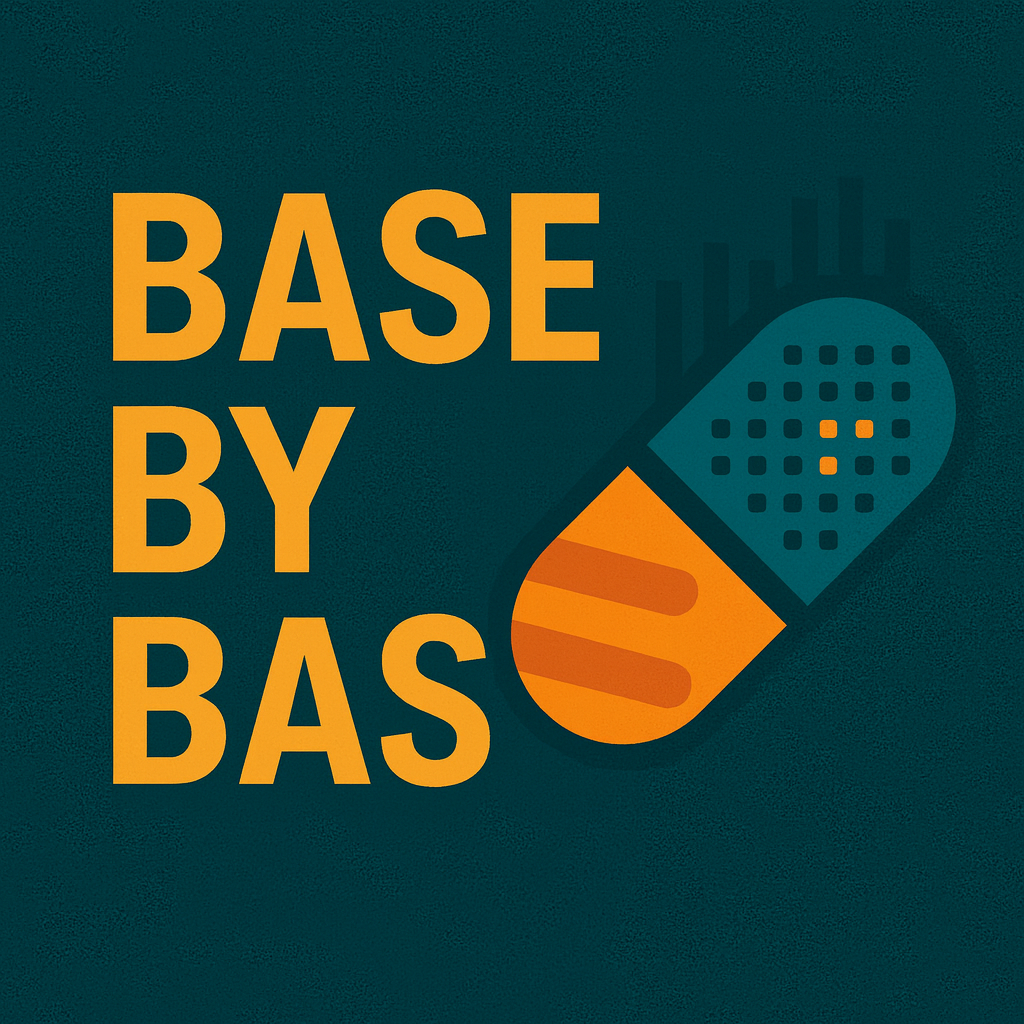
Episode 102: Clinical Impact of Pharmacogenetic Risk Variants in a Large Chinese Cohort
In this episode of PaperCast Base by Base, we explore how large-scale pharmacogenomics translates to real-world care using data from the Taiwan Precision Medicine Initiative. We follow a Nature Communications study that analyzes gene–drug interactions across 486,956 Han Chinese participants, quantifying how pharmacogenetic risk variants shape adverse drug events and effectiveness in routine practice while situating the findings within broader themes such as gene–disease association, variant interpretation, functional and structural genomics, and clinical deployment of precision medicine.
Study Highlights:
Using custom SNP...
101: JAK2 Inhibition Selects RAS-Mutant Clones in Myelofibrosis
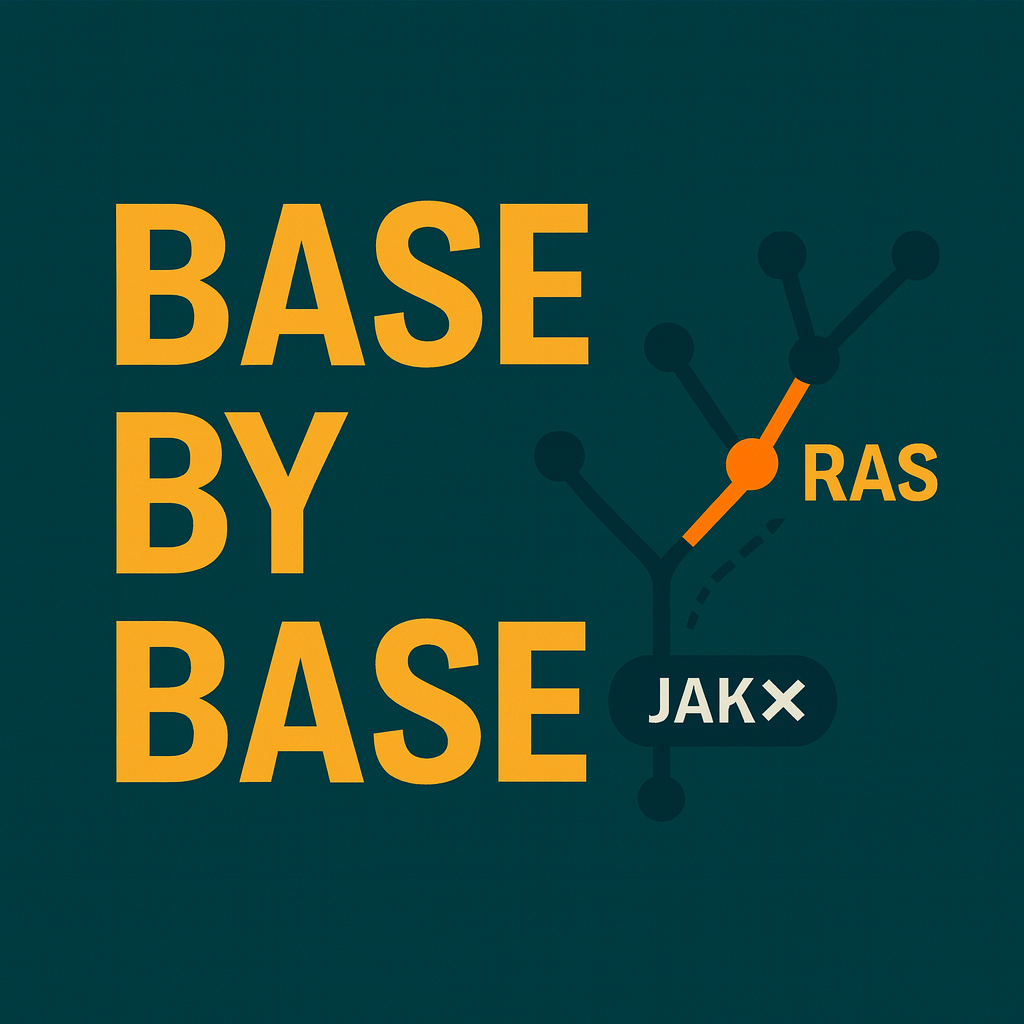
️Episode 101: JAK2 Inhibition Selects RAS-Mutant Clones in Myelofibrosis
In this episode of PaperCast Base by Base, we explore how JAK2 inhibition with ruxolitinib can reshape clonal architecture in myeloproliferative neoplasms (MPN), favoring outgrowth of RAS‑pathway mutant subclones and altering patient outcomes. We situate these findings within the broader landscape of genomics, functional and structural genomics, and proteomics—touching on themes like gene–disease association, variant interpretation, and resistance mechanisms in targeted therapies.
Study Highlights:
Using a longitudinal myelofibrosis cohort with paired molecular evaluations, the authors show that patients exposed to ruxolitinib preferentially acquire or expan...
️ 100: Epigenomic Diagnosis and Prognosis of Acute Myeloid Leukemia
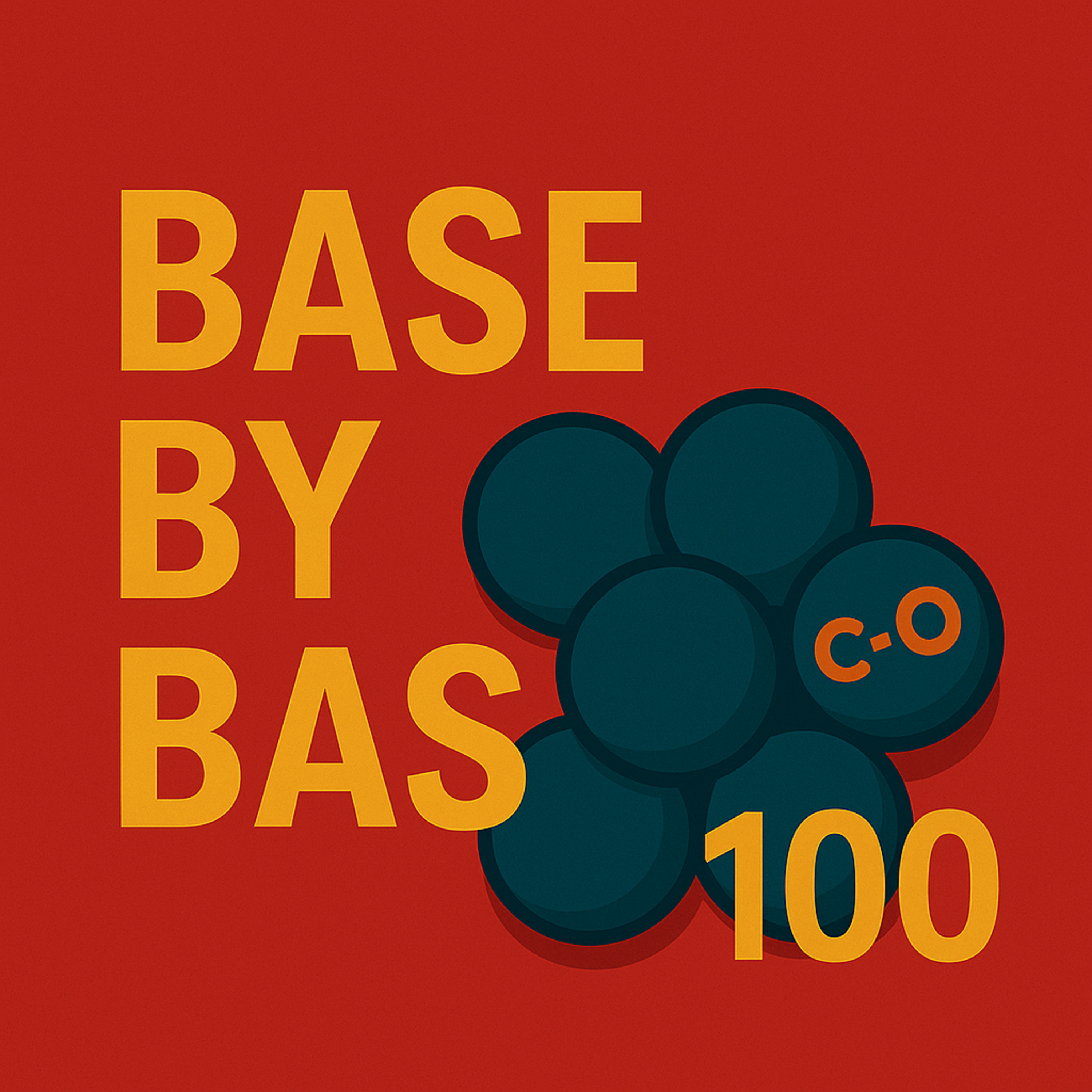
️ Episode 100: Epigenomic Diagnosis and Prognosis of Acute Myeloid Leukemia
In this episode of PaperCast Base by Base, we explore a groundbreaking study that maps the epigenomic landscape of Acute Myeloid Leukemia (AML) and develops powerful diagnostic and prognostic tools for clinical use. The research introduces the Acute Leukemia Methylome Atlas (ALMA), integrating large-scale DNA methylation data, machine learning, and long-read sequencing to refine subtype classification and predict patient outcomes.
Study Highlights:
The authors harmonized DNA methylation profiles from 3,314 patient samples across 11 cohorts to build ALMA, an interactive atlas that visualizes hematopoietic heterogeneity and en...
️ 99: NXT2: A Testis-Specific RNA Export Factor Essential for Spermatogenesis
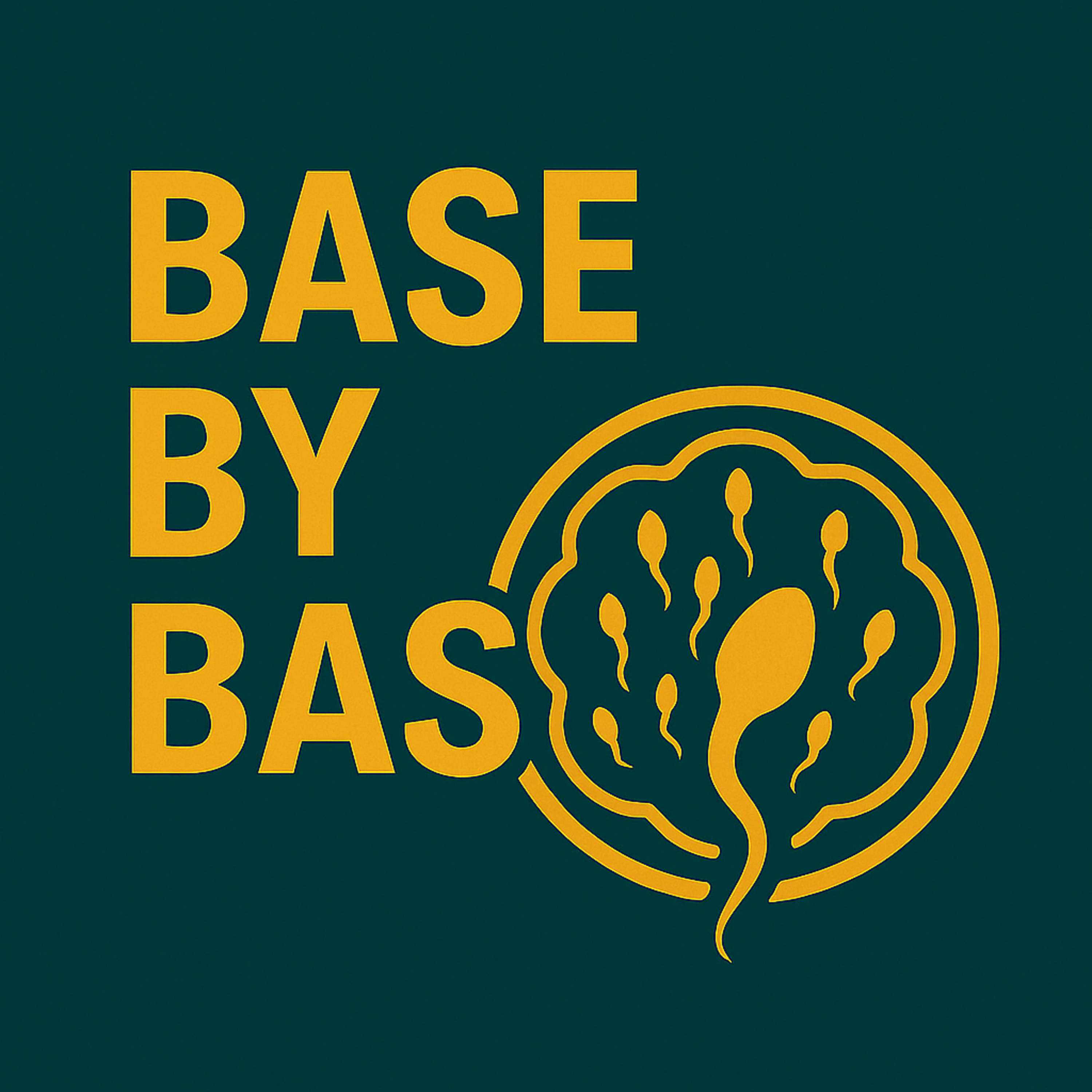
️ Episode 99: NXT2: A Testis-Specific RNA Export Factor Essential for Spermatogenesis
In this episode of PaperCast Base by Base, we explore how the testis-enriched paralog NXT2 orchestrates nucleocytoplasmic mRNA export in human germ cells and its critical role in male infertility.
Study Highlights:
Proteomic analyses of human testicular tissue uncovered a specialized interactome of NXT2 that associates with nuclear export factors NXF1, NXF2, and NXF3 as well as nuclear pore components. Domain deletion and co-immunoprecipitation studies demonstrated that NXT2 binds testis-specific NXF paralogs via its NTF2-like domain. Genetic screening of large cohorts of in...
️ 98: Cell Marker Accordion: Interpretable Single-Cell and Spatial Omics Annotation in Health and Disease

️ Episode 98: Cell Marker Accordion: Interpretable Single-Cell and Spatial Omics Annotation in Health and Disease
In this episode of PaperCast Base by Base, we explore a user-friendly platform developed by Busarello et al. that integrates and standardizes over 23 human and murine gene-marker databases into a weighted resource for robust annotation and interpretation of single-cell and spatial omics data across both physiological and pathological contexts. This resource advances functional genomics, structural genomics, and proteomics research by harmonizing nomenclature and improving marker reliability.
Study Highlights:
The Cell Marker Accordion harmonizes cell-type and tissue no...
️ 97: Pancreatic Cancer Genomics: Insights from the COMPASS Trial
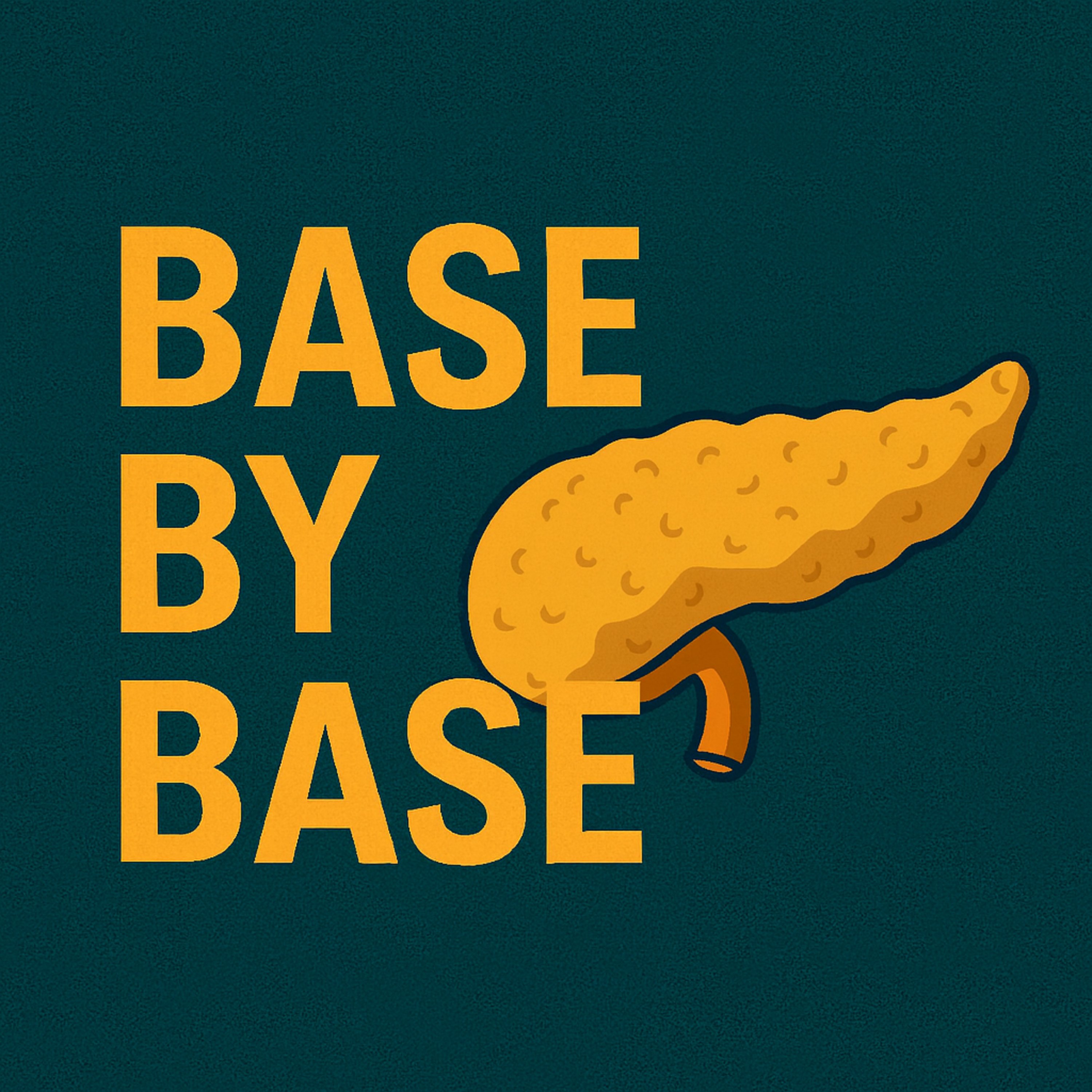
️ Episode 97: Pancreatic Cancer Genomics: Insights from the COMPASS Trial
In this episode of PaperCast Base by Base, we explore how integrated whole genome and transcriptome sequencing uncovers clinically relevant subtypes and molecular features in advanced pancreatic ductal adenocarcinoma (PDAC).
Study Highlights:
The COMPASS trial profiled 268 advanced PDAC patients, generating whole genome and RNA sequencing data before chemotherapy initiation. Distinct subgroups emerged, including KRAS wild-type cases with BRAF alterations and homologous recombination-deficient (HRD) tumors enriched for mutational signature SBS3 and high HRDetect scores. Patients with basal-like subtypes and elevated systemic inflammation (GRIm-S high) had si...
️ 96: Early Cerebrospinal Fluid Proteomic Changes in Down Syndrome and Alzheimer’s Disease

️ Episode 96: Early Cerebrospinal Fluid Proteomic Changes in Down Syndrome and Alzheimer’s Disease
In this episode of PaperCast Base by Base, we explore a large-scale proteomic study comparing cerebrospinal fluid (CSF) profiles in individuals with Down Syndrome (DS), late-onset Alzheimer’s disease (LOAD), and autosomal dominant Alzheimer’s disease (ADAD). This study uncovers unique and shared molecular signatures across these conditions, with a particular focus on the early and progressive changes in DS-associated Alzheimer’s disease (DSAD).
Study Highlights:
Using tandem mass tag mass spectrometry, researchers profiled over 1000 proteins in CSF from 365 individuals, including...
️ 95: Mitochondria on the Move: Biotechnological Strategies for Transfer and Transplantation
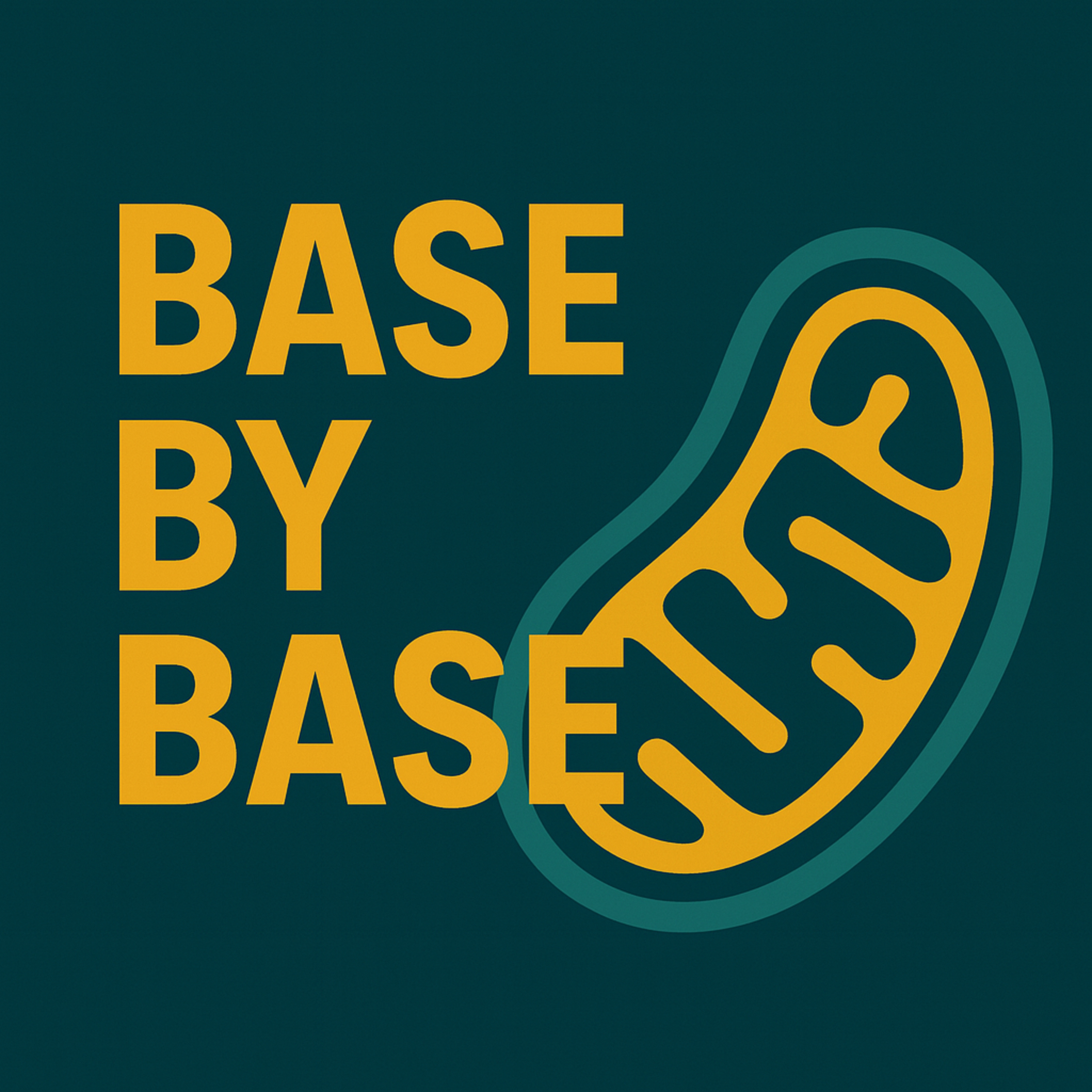
️ Episode 95: Mitochondria on the Move: Biotechnological Strategies for Transfer and Transplantation
In this episode of PaperCast Base by Base, we explore recent advances in biotechnological methods for mitochondria transfer and transplantation aimed at restoring cellular function in diseases driven by mitochondrial dysfunction.
Study Highlights:
The authors review current approaches for isolating and delivering mitochondria, including liposomal encapsulation, extracellular vesicle carriers, and surface modifications that improve uptake and stability.
They analyze the role of cell-penetrating peptides, nanomotorized delivery systems, and hydrogels in enhancing targeting efficiency and biocompatibility across cardiovascular and neurodegenerative disease mo...
️ 94: Intraindividual Epigenetic Heterogeneity in Advanced Prostate Cancer

️ Episode 94: Intraindividual Epigenetic Heterogeneity in Advanced Prostate Cancer
In this episode of PaperCast Base by Base, we explore how integrated DNA methylation, RNA sequencing, and histone modification profiling across metastatic lesions reveal intraindividual epigenetic diversity underlying phenotypic subtypes of castration-resistant prostate cancer.
Study Highlights: The research team performed multi-omic profiling combining reduced representation bisulfite sequencing, RNA sequencing, and H3K27ac and H3K27me3 profiling across 98 metastatic lesions from patients with castration-resistant prostate cancer. They found that, although epigenetic and transcriptomic landscapes are generally stable within individual patients, certain metastases display outlier DNA methylation an...
️ 93: Neuroinvasive and Pulmonary Virulence of H5N1 Clade 2.3.4.4b Genotype B3.13

️ Episode 93: Neuroinvasive and Pulmonary Virulence of H5N1 Clade 2.3.4.4b Genotype B3.13
In this episode of PaperCast Base by Base, we explore how a bovine-derived H5N1 virus from clade 2.3.4.4b genotype B3.13 exhibits enhanced pulmonary and neurovirulent properties in mouse models, highlighting its potential implications for zoonotic transmission and public health.
Study Highlights:
Using intranasal and orogastric inoculation of C57BL/6J and BALB/c mice with four clade 2.3.4.4b H5N1 isolates, the researchers assessed weight loss, survival, tissue viral loads, histopathology and cytokine responses
The bovine B3.13 isolate ca...
️ 92: Genetic Loss of CFHR5 Function Protects Against Age-Related Macular Degeneration

️ Episode 92: Genetic Loss of CFHR5 Function Protects Against Age-Related Macular Degeneration
In this episode of PaperCast Base by Base, we explore a genome‑wide association and fine‑mapping study in a Finnish cohort that identifies CFHR5 loss‑of‑function variants as independent protective factors against age‑related macular degeneration and investigates their impact on complement activation and retinal structure.
Study Highlights:
The researchers performed association testing, statistical finemapping, and conditional analyses in 12,495 AMD cases and 461,686 controls to resolve four major protective CFH locus haplotypes, two of which are driven by CFHR5 frameshift and missense var...
️ 91: Genome-wide Association of Plasma N-Glycome Reveals Links to Liver Disease and Anti-Inflammatory Proteins
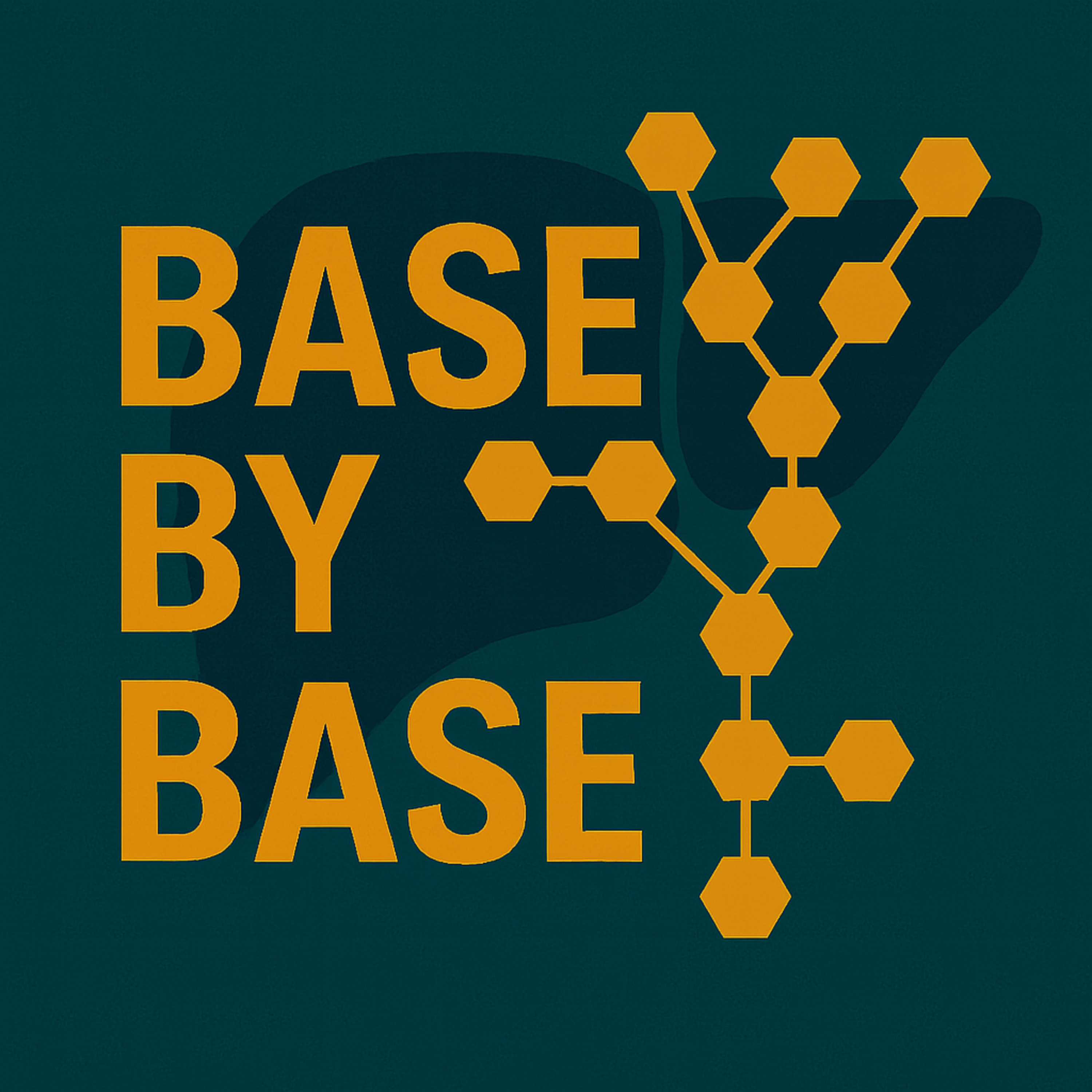
️ Episode 91: Genome-wide Association of Plasma N-Glycome Reveals Links to Liver Disease and Anti-Inflammatory Proteins
In this episode of PaperCast Base by Base, we explore a large-scale genome-wide association study that uncovers novel genetic regulators of plasma protein N-glycosylation and their connections to liver function and inflammatory pathways.
Study Highlights:
We conducted a meta-analysis of genome-wide association studies on 10,000 individuals from seven cohorts to identify genetic loci influencing plasma N-glycan structures. The study doubled the known glycosylation-associated loci by discovering 16 novel regions and prioritized 13 candidate genes, many of which are highly expressed in liver ti...
️ 90: Variable and Interactive Effects of Sex, APOE ε4 and TREM2 on Tau Deposition
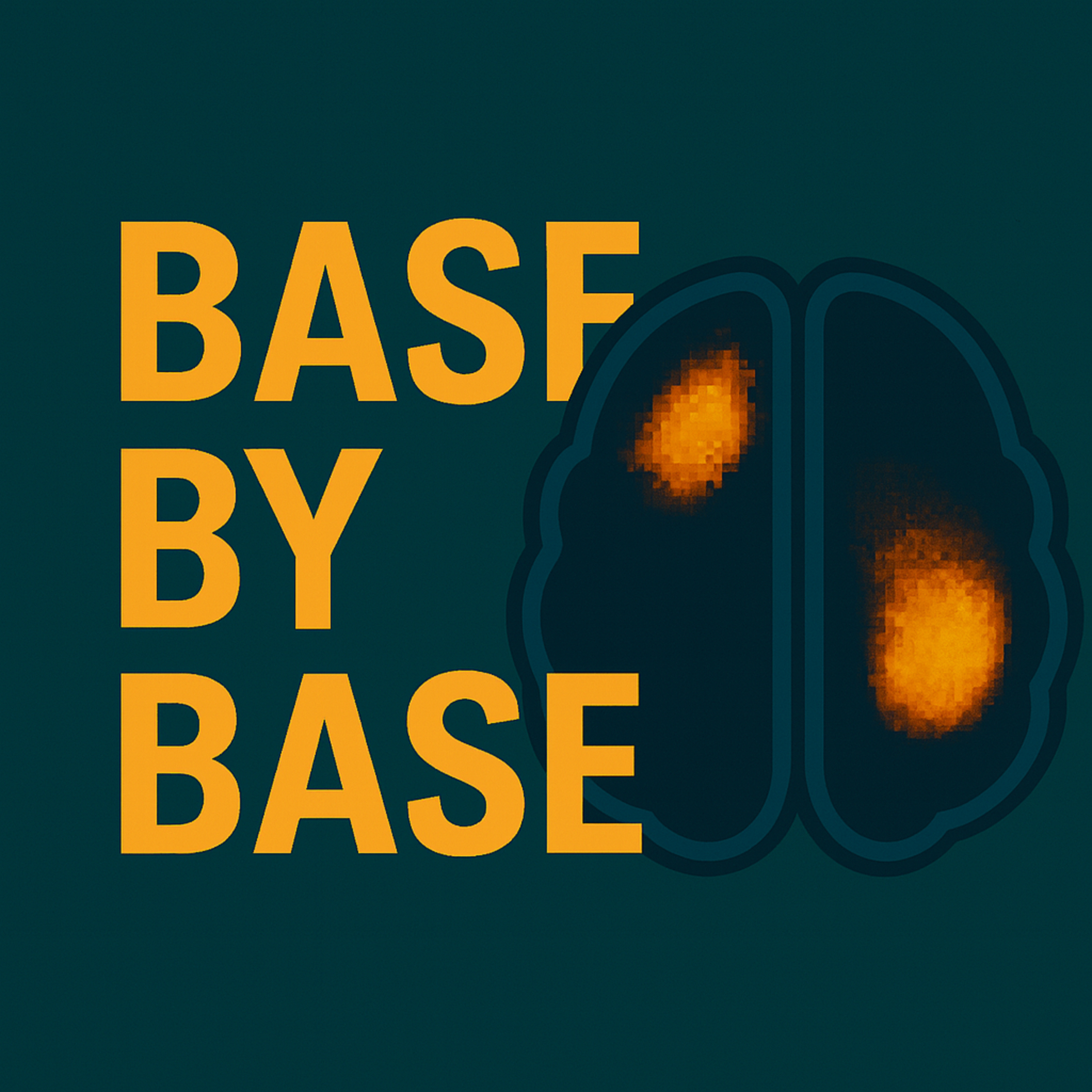
️ Episode 90: Variable and Interactive Effects of Sex, APOE ε4 and TREM2 on Tau Deposition
In this episode of PaperCast Base by Base, we explore how genetic factors—including sex differences, Apolipoprotein E ε4 allele dosage, and rare TREM2 risk variants—shape the accumulation and spread of tau pathology in Alzheimer’s disease using multimodal imaging and causal path analysis.
Study Highlights:
This multi-cohort investigation combined PET imaging and genetic data from over 1,300 participants across ADNI, A4, and HABS‑HD cohorts to model how amyloid-beta, entorhinal cortex tau, and genetics interact. Causal path modeling rev...
️ 89: Decoding the Genetics of Smell: Sex-Specific Variants in Olfactory Identification

️ Episode 89: Decoding the Genetics of Smell: Sex-Specific Variants in Olfactory Identification
In this episode of PaperCast Base by Base, we explore how a genome-wide association meta-analysis of olfactory identification across 21,495 individuals reveals novel genetic loci underlying human smell perception.
Study Highlights:
Using the Sniffin’ Sticks screening test across four European cohorts totaling 21,495 individuals, the authors conducted a genome-wide association meta-analysis of twelve common odorant identifications and an overall identification score. The study discovered ten independent loci reaching genome-wide significance, seven of which were novel and included candidate genes within olfactory receptor clusters as well...
️ 88: Stable Heritability of Type 1 Diabetes Over Three Decades in Sweden

️ Episode 88: Stable Heritability of Type 1 Diabetes Over Three Decades in Sweden
In this episode of PaperCast Base by Base, we explore a Swedish nationwide register-based study that assesses whether the heritability of childhood-onset type 1 diabetes has changed from 1982 to 2010 and how environmental factors have contributed to the rising incidence.
Study Highlights:
Leveraging data from nearly three million children born in Sweden between 1982 and 2010, the authors estimated heritability and non-shared environmental contributions to type 1 diabetes variance using sibling-based liability threshold models.
They found that the heritability of childhood-onset type 1 di...
️ 87: Circulating cfDNA Methylation Reveals Allograft Injury Sources after Liver Transplant
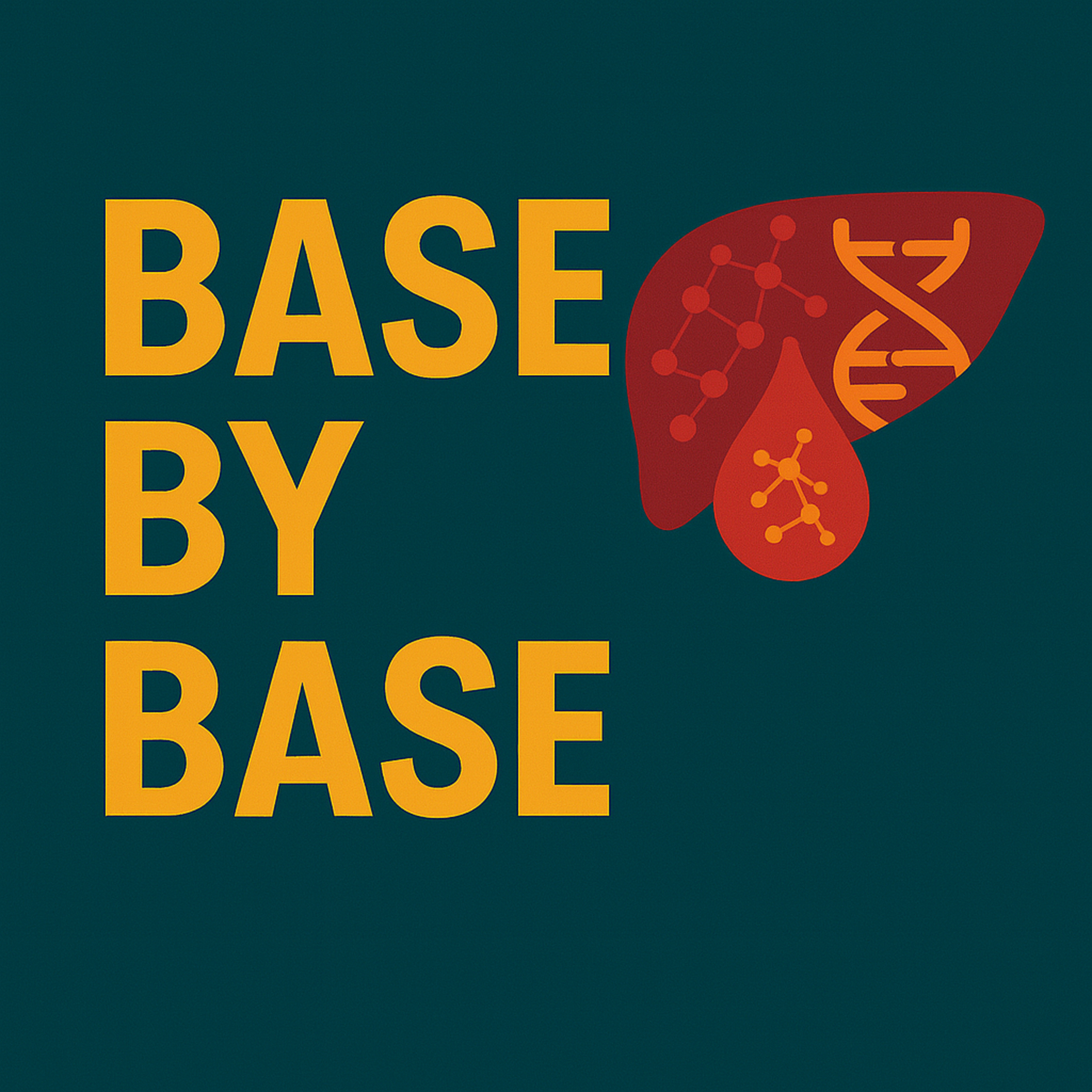
️ Episode 87: Circulating cfDNA Methylation Reveals Allograft Injury Sources after Liver Transplant
In this episode of PaperCast Base by Base, we explore how sequence-based analysis of cell-free DNA methylation patterns can non-invasively monitor and differentiate cellular sources of allograft injury in liver transplant patients within the first post-operative month.
Study Highlights:
The authors performed hybridization capture-sequencing of bisulfite-treated cfDNA from 130 serial blood samples of 44 liver transplant patients. They mapped methylation signatures to an expanded atlas of cell-type-specific methylomes comprising hepatocytes, biliary epithelium, hepatic stellate cells, endothelial cells, and immune cells. They observed a transient in...
️ 86: Variable Penetrance in Monogenic Traits — How Genetic Background Modulates Disease Severity
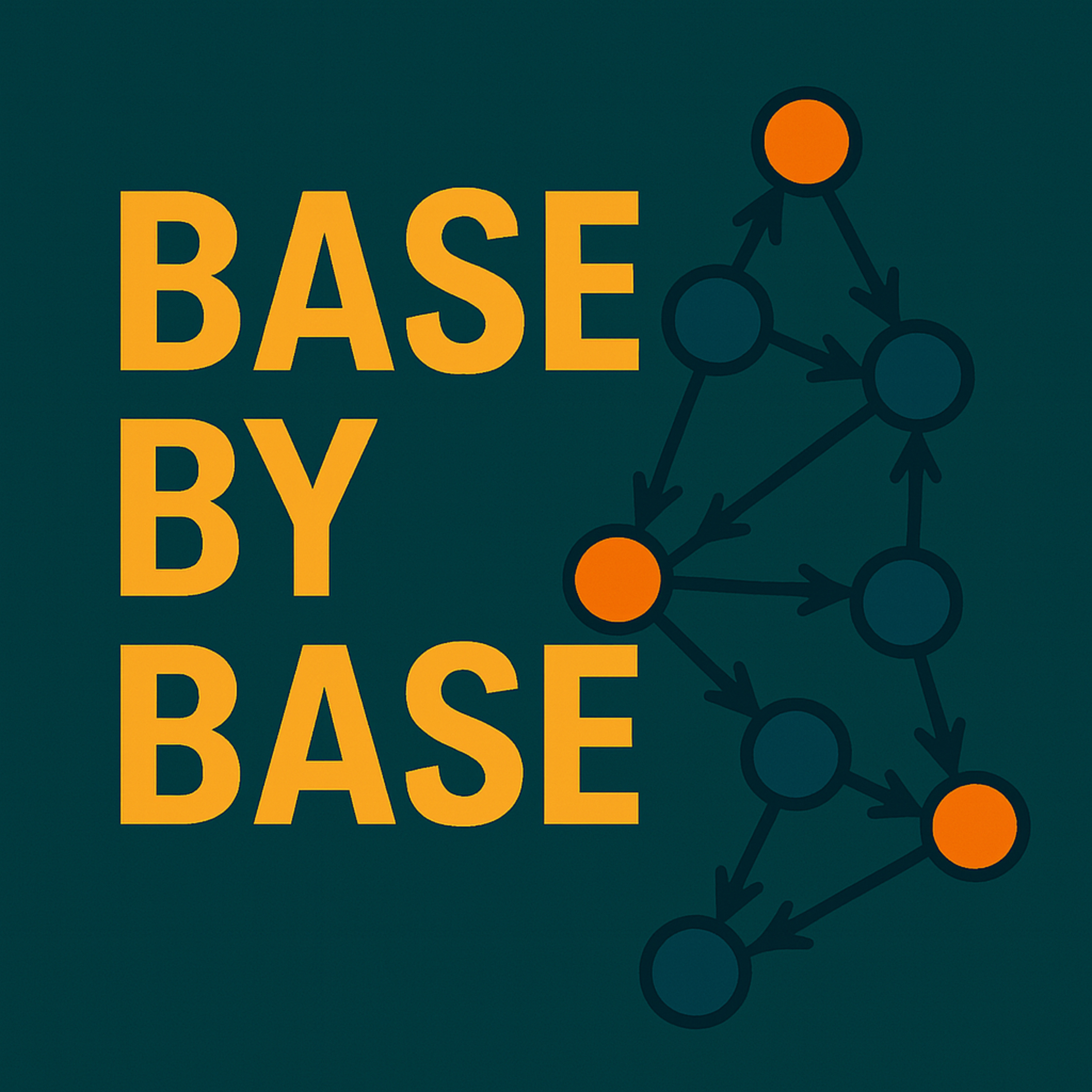
️ Episode 86: Variable Penetrance in Monogenic Traits — How Genetic Background Modulates Disease Severity
In this episode of PaperCast Base by Base, we explore a landmark study that unravels why carriers of the same pathogenic variant often present with very different clinical outcomes, providing new insights into gene–disease association, variant interpretation, and the interplay between rare and common genetic effects.
Study Highlights:
The researchers analyzed exome and clinical data from large biobank cohorts to investigate incomplete penetrance and disease variability in monogenic metabolic traits. They developed a framework combining variant-level effect size estimation through a prot...
️ 85: Genomic landscape of virus-associated cancers
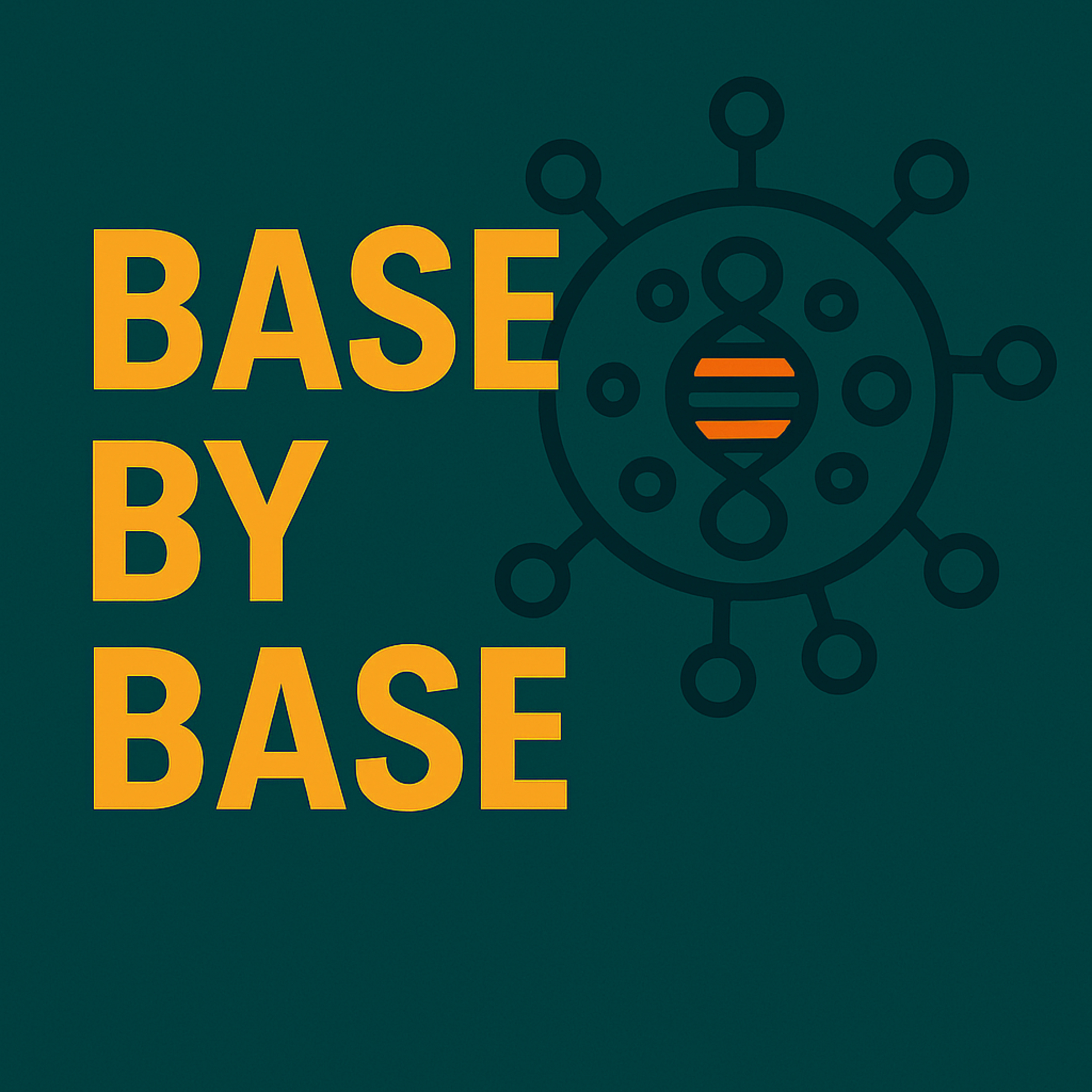
️ Episode 85: Genomic landscape of virus-associated cancers
In this episode of PaperCast Base by Base, we explore the comparative genomic analysis of virus-positive and virus-negative tumors across nine cancer types linked to five oncogenic viruses uncovering epidemiological patterns, mutational signatures, and therapeutic implications.
Study Highlights:
The authors aggregated genomic data from 1,971 tumors spanning nine virus-associated cancers and performed comprehensive analyses of mutation burden and driver mutations across virus-positive and virus-negative cases. They identified that virus-positive tumors generally have a lower somatic mutation load but frequent mutations in RNA helicases DDX3X and EIF4A1 an...
️ 84: Variants in NR6A1 cause a novel oculo-vertebral-renal syndrome

️ Episode 84: Variants in NR6A1 cause a novel oculo-vertebral-renal syndrome
In this episode of PaperCast Base by Base, we explore the discovery of rare variants in the orphan nuclear receptor gene NR6A1 as the genetic cause of a newly described autosomal dominant oculo-vertebral-renal (OVR) syndrome characterized by colobomatous microphthalmia, vertebral anomalies, and congenital kidney abnormalities.
Study Highlights:
We performed genome sequencing in six independent families affected by uveal coloboma with or without microphthalmia and identified six rare NR6A1 variants segregating with disease. Functional validation included in silico modeling predicting disrupted DNA bi...
